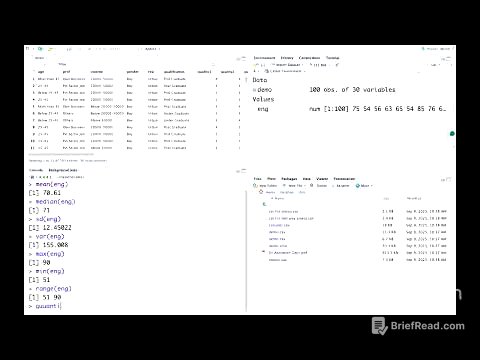TLDR;
This session is a continuation of the NEET bridge course, focusing on the animal kingdom. It covers the classification of animals based on various criteria, including the level of organisation and body symmetry. The lecture explains the characteristics of different phyla, such as Echinodermata, Hemichordata, and Chordata, and differentiates between chordates and non-chordates.
- Echinodermata are spiny-skinned animals found in marine environments.
- Hemichordata, previously thought to be related to chordates, are now classified as non-chordates.
- Chordata possess a notochord at some point in their life cycle, which may develop into a vertebral column.
Introduction [0:00]
Dr. Anisha welcomes students to the zoology session for the NEET bridge course 2025, aimed at NEET 2027 aspirants. The session resumes the discussion on the animal kingdom, building upon the previous day's topics. The lecture will cover the phylum Echinodermata and beyond, after having discussed phyla like Porifera, Coelenterates, Ctenophora, Platyhelminthes, Aschelminthes, Annelida, Arthropoda, and Mollusca in the previous session.
Phylum Echinodermata [2:15]
Echinodermata are characterised by their spiny skin, with 'echino' meaning spine and 'dermata' meaning skin. These marine organisms have hard, calcium-based structures that act as their skeleton, providing shape, appearance, and toughness. Examples include starfish, brittle stars (Ophiura), and sea urchins (Archin). The spines serve as a protective mechanism against predators.
Phylum Hemichordata [5:35]
Hemichordata were initially thought to be chordates due to a structure resembling a notochord. Chordates possess a notochord, which can transform into a vertebral column, while non-chordates lack this structure. However, Hemichordata have a stomochord, which is different from a notochord. Therefore, they are now classified as non-chordates or invertebrates. Examples include tongue worms, named for their tongue-like appearance.
Phylum Chordata [10:48]
Chordata are defined by the presence of a notochord at some point in their life cycle. The notochord may transform into a vertebral column in higher organisms. Primitive chordates, or protochordates, retain the notochord throughout their life, while more advanced chordates, or eucordates, develop a vertebral column. Examples of protochordates include hagfish and amphioxis. Eucordates include fish, amphibians, reptiles, birds, and mammals.
Basis of Classification [18:15]
The classification of animals into different phyla is based on several characteristics. These include: level of organisation, body symmetry, body plan, germ layers, body cavity, segmentation, digestive system, respiratory system, circulatory system, nervous system, and reproductive system. A question from the audience clarifies the difference between non-chordates and protochordates: non-chordates lack a notochord entirely, while protochordates possess a notochord that does not develop into a vertebral column.
Level of Organisation [24:42]
The level of organisation refers to how cells are arranged and function within an organism. The levels are: cellular, tissue, organ, and organ system. In cellular organisation, individual cells perform all functions, as seen in Porifera (sponges). Tissue organisation involves groups of cells with similar structure and function, as in Coelenterata and Ctenophora. Organ organisation features specific organs for specific functions, as in Platyhelminthes. Organ system organisation involves multiple organs working together, as in Aschelminthes onwards to Chordata.
Body Symmetry [39:29]
Body symmetry refers to the arrangement of body parts around a central axis. Symmetry is when a body or structure can be divided into two equal halves by a line or axis passing through its midpoint or central axis. Asymmetry is when a body or structure cannot be divided into two equal halves. Symmetric organisms can exhibit radial symmetry, where multiple planes can divide the organism into equal halves (e.g., Coelenterata, Ctenophora, and adult Echinodermata), or bilateral symmetry, where only one plane can divide the organism into equal halves (e.g., Platyhelminthes to Chordata). Asymmetric organisms (e.g., Porifera) cannot be divided into equal halves.









